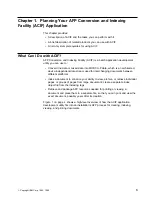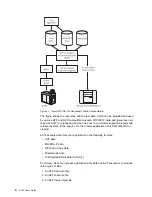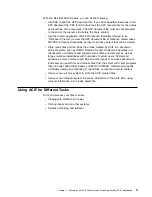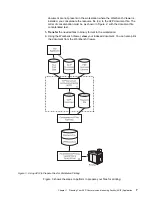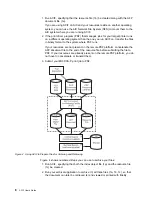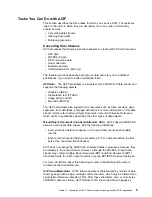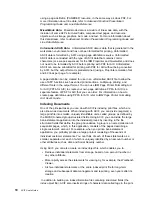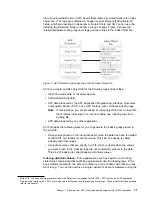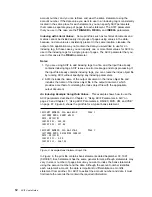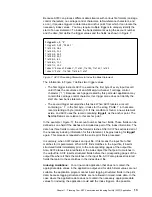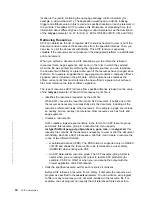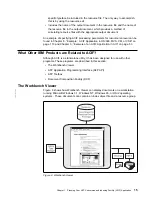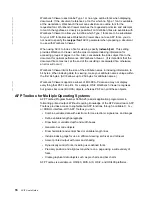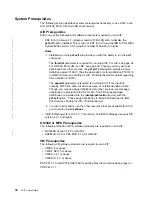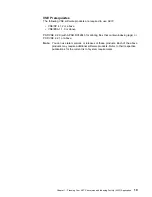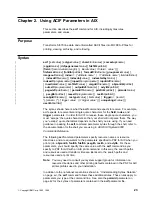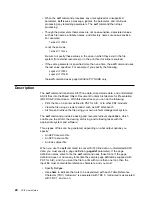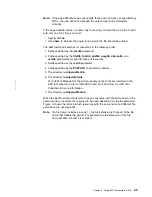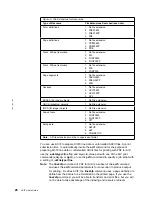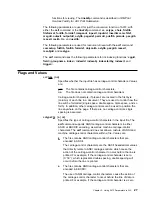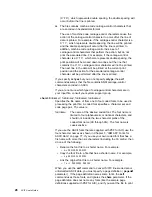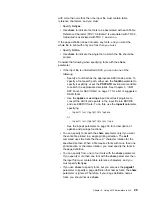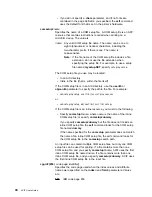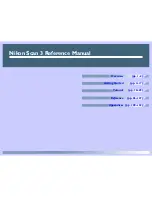
|
Workbench Viewer uses Adobe Type 1 or true type outline fonts when displaying
|
documents. If the document references a font for which no Type 1 font is available
|
at the workstation, Workbench Viewer can substitute an outline font for the
|
requested font. Workbench Viewer matches the requested point size and attempts
|
to match the typeface as closely as possible. Font definition files are available with
|
Workbench Viewer to allow you to define which Type 1 fonts are to be substituted
|
for your AFP fonts. Because Workbench Viewer does not use AFP fonts, you do
|
not need to specify the restype=font ACIF parameter when preparing a document
|
to use with Workbench Viewer.
When using ACIF to index a file for viewing, specify indexobj=all. This setting
provides Workbench Viewer with the most complete indexing information for
accessing groups of pages in a file. Also, concatenate the index object file to the
document for optimal performance of Workbench Viewer. (It is important that the
document file comes last, at the end of the resulting concatenated file; otherwise,
an error will occur.)
Workbench Viewer limits the size of the attribute names in indexing information to
64 bytes. When indexing data for viewing, make your attribute names unique within
the first 64 bytes. (ACIF allows up to 250 bytes for attribute names.)
|
Workbench Viewer supports a subset of MO:DCA-P data and may not display
|
everything that PSF can print. For example, OS/2 Workbench Viewer recognizes
|
but ignores bar code (BCOCA) objects, whereas PSF can print these objects.
AFP Toolbox for Multiple Operating Systems
AFP Toolbox(Program Number 5655-A25) assists application programmers in
formatting printed output. Without requiring knowledge of the AFP data stream, AFP
Toolbox provides access to sophisticated AFP functions through a callable C, C
++
,
or COBOL interface. With AFP Toolbox you can:
Combine variable data with electronic forms, electronic signatures, and images
Define variable length paragraphs
Draw fixed or variable depth and width boxes
Generate bar code objects
Draw horizontal and vertical fixed or variable length lines
Include indexing tags for use in efficient viewing, archival, and retrieval
Accent printed output with color and shading
Dynamically control fonts, including user-defined fonts
Precisely position and align text anywhere on a page using a wide variety of
fonts
Create graphical data objects such as pie charts and bar charts
AFP Toolbox is available on OS/390, MVS, AIX, OS/2, and OS/400 platforms.
16
ACIF User’s Guide
Summary of Contents for S544-5285-01
Page 1: ...IBM Print Services Facility IBM AFP Conversion and Indexing Facility User s Guide S544 5285 01...
Page 2: ......
Page 3: ...IBM Print Services Facility IBM AFP Conversion and Indexing Facility User s Guide S544 5285 01...
Page 10: ...viii ACIF User s Guide...
Page 22: ...2 ACIF User s Guide...
Page 40: ...20 ACIF User s Guide...
Page 41: ...Part 2 Using ACIF in the AIX Environment Copyright IBM Corp 1993 1999 21...
Page 42: ...22 ACIF User s Guide...
Page 72: ...52 ACIF User s Guide...
Page 96: ...76 ACIF User s Guide...
Page 99: ...Part 3 Using ACIF in the OS 390 MVS VM and VSE Environments Copyright IBM Corp 1993 1999 79...
Page 100: ...80 ACIF User s Guide...
Page 106: ...86 ACIF User s Guide...
Page 134: ...Figure 24 Example of a Customer s Phone Bill 114 ACIF User s Guide...
Page 142: ...122 ACIF User s Guide...
Page 196: ...176 ACIF User s Guide...
Page 197: ...Part 4 Appendixes Copyright IBM Corp 1993 1999 177...
Page 198: ...178 ACIF User s Guide...
Page 206: ...186 ACIF User s Guide...
Page 210: ...190 ACIF User s Guide...
Page 226: ...206 ACIF User s Guide...
Page 253: ......


